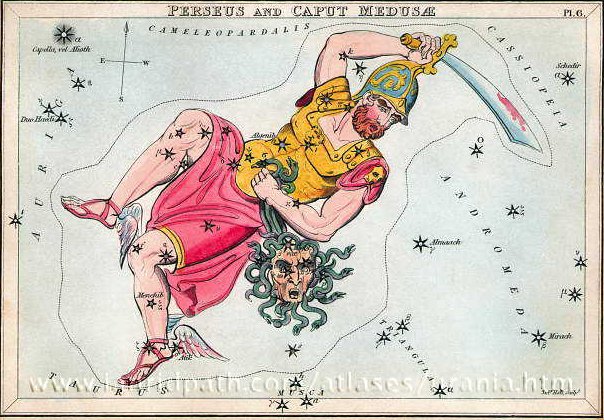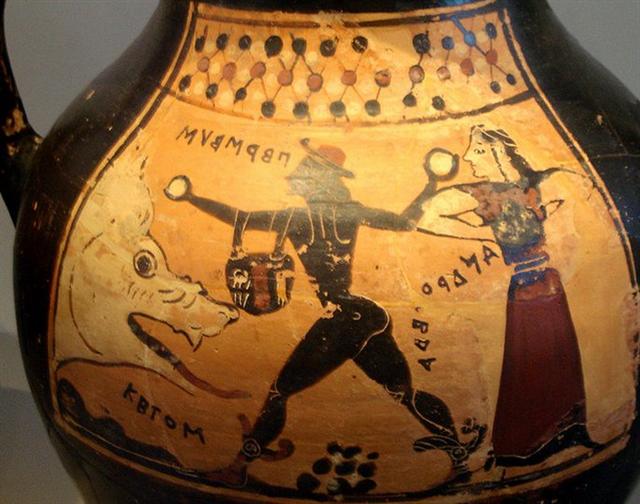145. Once again. Evidently we can perceive a kind of correspondence between the complex glyphs Gb7-30 and Cb1-6:
If Cb1-6 was intended to illustrate the birth of a new 'Tree' (Rakau), how a new year was bursting forth in the east, then Gb 7-30 (→ 210 = 42 / 2 * 10) could perhaps have been intended to illustrate the opposite event, how the separated parts were carefully brought together again.... The 'classic' version, however, was much more detailed: the rope would seem to rise high into the skies, disappearing from view. The boy would climb the rope and be lost to view. The magician would call back his boy assistant, and, on getting no response, become furious. The magician then armed himself with a knife or sword and climbed the rope, vanishing too. An argument would be heard, and then limbs would start falling, presumably cut from the assistant by the magician. When all the parts of the body, including the torso, landed on the ground, the magician would climb down the rope. He would collect the limbs and put them in a basket, or collect the limbs in one place and cover them with a cape or blanket. Soon the boy would appear, restored ... ... They go inland at the land. The child nursed and tended grows up, is able to go and play. Each day he now goes off a bit further away, moving some distance away from the house, and then returns to their house. So it goes on and the child is fully grown and goes to play far away from the place where they live. He goes over to where some work is being done by a father and son. Likāvaka is the name of the father - a canoe-builder, while his son is Kiukava. Taetagaloa goes right over there and steps forward to the stern of the canoe saying - his words are these: 'The canoe is crooked.' (kalo ki ama). Instantly Likāvaka is enraged at the words of the child. Likāvaka says: 'Who the hell are you to come and tell me that the canoe is crooked?' Taetagaloa replies: 'Come and stand over here and see that the canoe is crooked.' Likāvaka goes over and stands right at the place Taetagaloa told him to at the stern of the canoe. Looking forward, Taetagaloa is right, the canoe is crooked. He slices through all the lashings of the canoe to straighten the timbers. He realigns the timbers. First he must again position the supports, then place the timbers correctly in them, but Kuikava the son of Likāvaka goes over and stands upon one support. His father Likāvaka rushes right over and strikes his son Kuikava with his adze. Thus Kuikava dies. Taetagaloa goes over at once and brings the son of Likāvaka, Kuikava, back to life. Then he again aligns the supports correctly and helps Likāvaka in building the canoe. Working working it is finished ... ... Sorrowing, then, the two women placed Osiris's coffer on a boat, and when the goddess Isis was alone with it at sea, she opened the chest and, laying her face on the face of her brother, kissed him and wept. The myth goes on to tell of the blessed boat's arrival in the marshes of the Delta, and of how Set, one night hunting the boar by the light of the full moon, discovered the sarcophagus and tore the body into fourteen pieces, which he scattered abroad; so that, once again, the goddess had a difficult task before her. She was assisted, this time, however, by her little son Horus, who had the head of a hawk, by the son of her sister Nephtys, little Anubis, who had the head of a jackal, and by Nephtys herself, the sister-bride of their wicked brother Set. Anubis, the elder of the two boys, had been conceived one very dark night, we are told, when Osiris mistook Nephtys for Isis; so that by some it is argued that the malice of Set must have been inspired not by the public virtue and good name of the noble culture hero, but by this domestic inadventure. The younger, but true son, Horus, on the other hand, had been more fortunately conceived - according to some, when Isis lay upon her dead brother in the boat, or, according to others, as she fluttered about the palace pillar in the form of a bird. The four bereaved and searching divinities, the two mothers and their two sons, were joined by a fifth, the moon-god Thoth (who appears sometimes in the form of an ibis-headed scribe, at other times in the form of a baboon), and together they found all of Osiris save his genital member, which had been swallowed by a fish. They tightly swathed the broken body in linen bandages, and when they performed over it the rites that thereafter were to be continued in Egypt in the ceremonial burial of kings, Isis fanned the corpse with her wings and Osiris revived, to become the ruler of the dead. He now sits majestically in the underworld, in the Hall of the Two Truths, assisted by forty-two [42] assessors, one from each of the principal districts of Egypt; and there he judges the souls of the dead. These confess before him, and when their hearts have been weighed in a balance against a feather, receive, according to their lives, the reward of virtue and the punishment of sin ... Metoro said e niu tu at the day after Bharani, and the glyph type niu was probably illustrating by way of the growth of a young coconut tree (niu) how life always would return. The coconut tree was especially suitable for such a purpose because it grew at the margin between the sea and land.
At the time of Bharani the Demon Star rose heliacally at the Julian equinox. There were 4 days from Bharani to Algol, to the day when Perseus saved the poor Chained Andromeda from the open jaws of the Sea beast.
...
The myth is that Perseus was sent to cut
off the head of the snaky-locked Gorgon
Medusa, a rival of the Goddess Athene,
whose baleful look turned men into
stone, and that he could not accomplish
the task until he had gone to the three
Graeae, 'Grey Ones', the three old
sisters of the Gorgons who had only one
eye and one tooth between them, and by
stealing eye and tooth had blackmailed
them into telling him where the grove of
the Three Nymphs was to be found.
From the Three Nymphs he then obtained
winged sandals like those of Hermes, a
bag to put the Gorgon's head into, and a
helmet of invisibility. Hermes also
kindly gave him a sickle; and Athene
gave him a mirror and showed him a
picture of Medusa so that he would
recognize her.
He threw the tooth of the Three Grey
Ones, and some say the eye also, into
Lake Triton, to break their power, and
flew on to Tartessus where the Gorgons
lived in a grove on the borders of the
ocean; there he cut off the sleeping
Medusa's head with the sickle, first
looking into the mirror so that the
petrifying charm should be broken,
thrust the head into his bag, and flew
home pursued by other Gorgons
...
|
|||||||||||||||||||||||||||||||||||||||||||||||||||||||||||||||||||||||||||||||||||||||||||||||||||||||||||||||||||||||||||||||||||||||||||||||||||||||||||||||||||||||||||||||||||||||||














